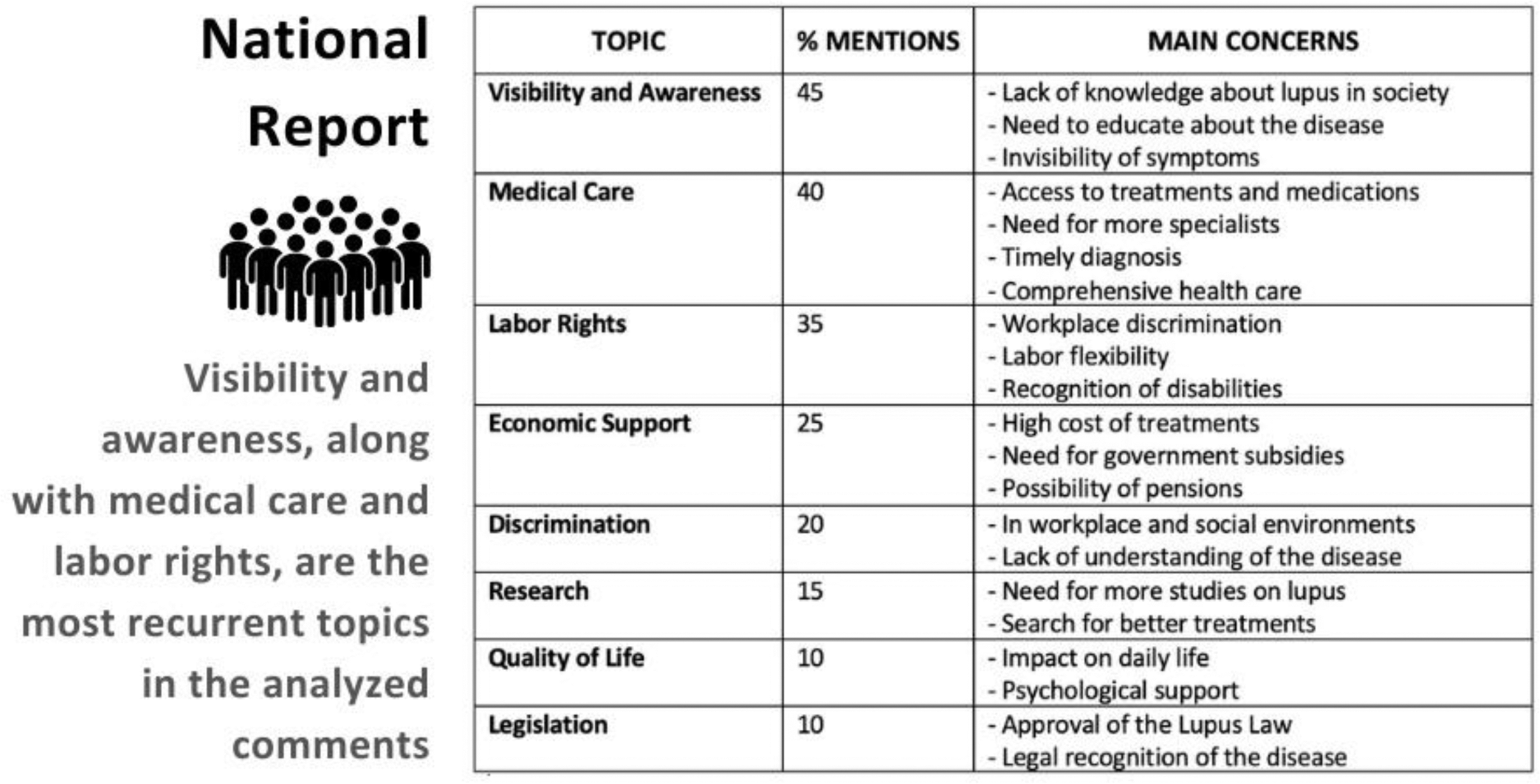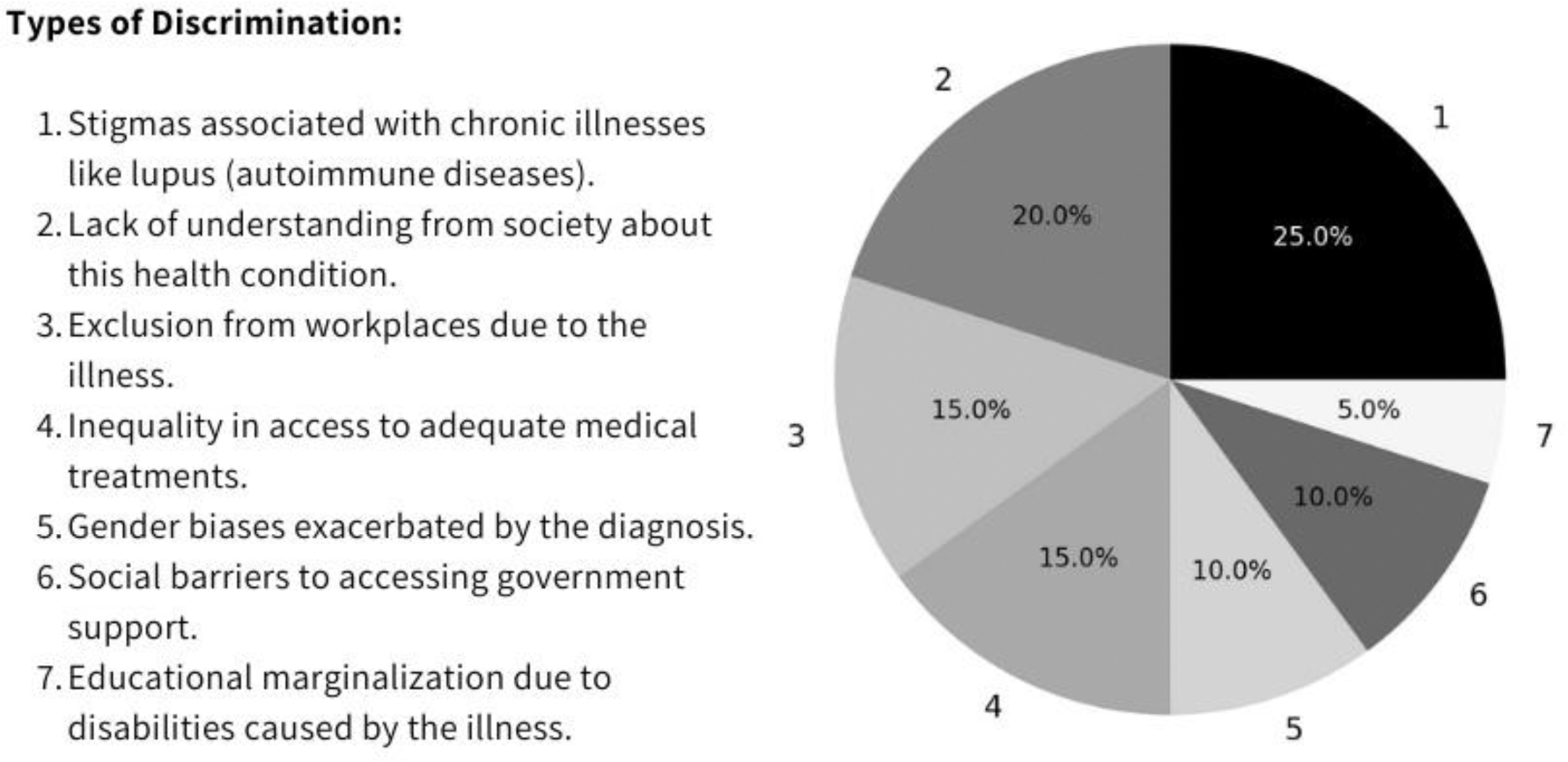

Background: Lupus affects more than five million people worldwide, and in Mexico, it faces significant challenges. The country lacks an official registry of diagnosed people, and it is estimated that the average time to obtain an accurate diagnosis ranges between 4 and 6 years [2]. Furthermore, there is a severe shortage of specialists, with only 0.58 rheumatologists per 100,000 inhabitants [4]—an alarmingly low figure considering a population of 126 million [5]. This highlights a critical deficit in the availability of rheumatology specialists in the country. Since 2015, Cetlu A.C. has worked on developing and promoting a legislative initiative to benefit people with lupus and other autoimmune diseases. This legislative proposal has received support from members of both chambers of Congress over different periods and it is now in the Senate known as #LeyLupus. This project has identified the main inequities and discriminatory practices surrounding lupus in Mexico. It is supported by the lupus community, aiming to: a) Establish a national registry, b) Eradicate workplace and social discrimination, and c) Promote research while reducing inequities in treatments and healthcare services. The initiative represents a historic step in providing a legislative framework.
Objectives: The proposed Law specifically, it seeks to amend and add various provisions to the General Health Law and the Federal Law to Prevent and Eliminate Discrimination concerning lupus and other autoimmune diseases. As a result, the law will enable the design of fair and locally appropriate public policies and care programs for each region and state, while also reducing the systemic discrimination experienced by people with lupus in clinical, social, educational, and workplace settings. The goal of this presentation is to demonstrate how the legislative project provided a detailed analysis of specific localities or regions where the movement had a significant impact.
Methods: Using a qualitative case study methodology, the research captured the complexity of lived experiences and the meanings attributed to the movement, which is essential for understanding its scope and impact on the quality of life of people with lupus. To implement this methodology, 32 digital survey links were distributed and applied over a two-month period in 2024, along with a single national survey link. Both instruments were completed by 2,847 participants by December. Specifically, the study breaks down the challenges of the process up to its current state, illustrating how the main demands, deficiencies have been addressed by geographic regions. Additionally, the research explains the stages and moments in which associations and foundations have been invited to take an active role in the journey.
Results: The process of structuring, presenting, socializing, and discussing the proposed Law has revealed that legislative issues and the conceptualization of the right to health and a dignified life as universal human rights are largely absent from the collective imagination of the lupus community (see Table 1). This is evidenced by the fact that these topics were among the least mentioned when participants in the surveys sought systemic solutions.
Table 1. Main care needs identified by the lupus community.

Source: Athié-Calleja, 2025.
Specifically, the study provided a breakdown of challenges related to healthcare services, lessons learned, and milestones reached in the process up to its current stage. It highlights how the main demands, deficiencies, needs, and projects of civil society organizations and citizens have been addressed by geographic regions. Additionally, the findings identified seven primary motivations for participation derived from discriminatory acts and seven types of discrimination linked to the diagnosis (see Figure 1).
Types of perceived and enacted discrimination against people with lupus.
Source: Athié-Calleja, 2025.

Conclusion: The path toward the declaration of a Law for the Rights of People with Lupus and Other Autoimmune Diseases in Mexico faces many challenges ahead. These challenges can be divided into two main areas: a ) Within lupus-related communities: Efforts are needed to ensure that individuals with lupus, their caregivers, healthcare professionals, and institutions of all kinds fully grasp the importance of having a legislative framework that supports citizens’ rights. b ) Across all social domains: There is a need for broader societal awareness, as emphasized in the Law Initiative:
“It is a reality that this disease contributes to the emergence of multiple forms of violence and violations of human rights […] This discrimination is further exacerbated by the lack of necessary treatments and healthcare services.” (Gaceta del Senado, 2024, November 20)
REFERENCES: [1] Drenkard, C. (2022). Prologue. In L. Athié (Ed.), Nos esforzamos y somos valientes: Memorias de nuestras batallas con el lupus (pp. 9–12). LEM México.
[2] Cardiel, M. (2024). Las múltiples realidades de la odisea diagnóstica.
Lúpica: Experiencias, saberes y contranarrativas del lupus, 1
(0), 8–12. Retrieved from
[3] Gaceta del Senado de la República. (2024, November 20). Retrieved from
[4] Goycochea-Robles, M. V.,
et al.
(2022). Situación de la reumatología en México: Déficit de reumatólogos y sus posibles soluciones.
Reumatología Clínica, 18
(2), 115–122. Retrieved from
[5] Instituto Nacional de Estadística y Geografía (INEGI). (2023).
Población total. México en cifras.
Retrieved from
Acknowledgements: NIL.
Disclosure of Interests: None declared.
© The Authors 2025. This abstract is an open access article published in Annals of Rheumatic Diseases under the CC BY-NC-ND license (